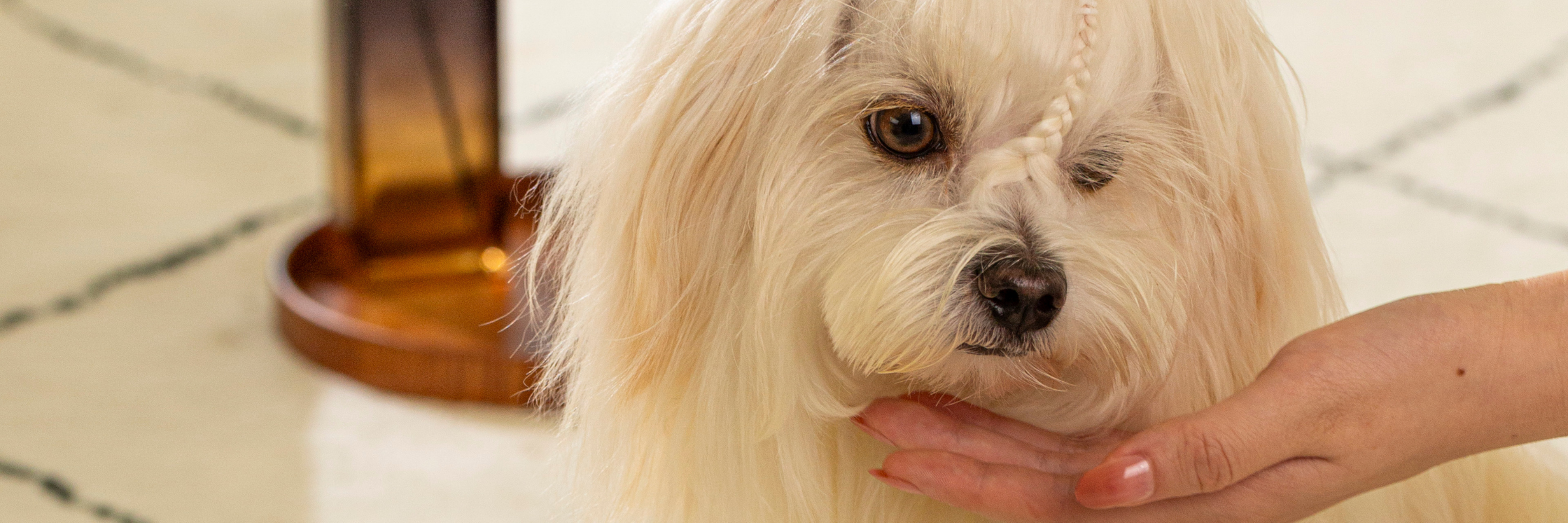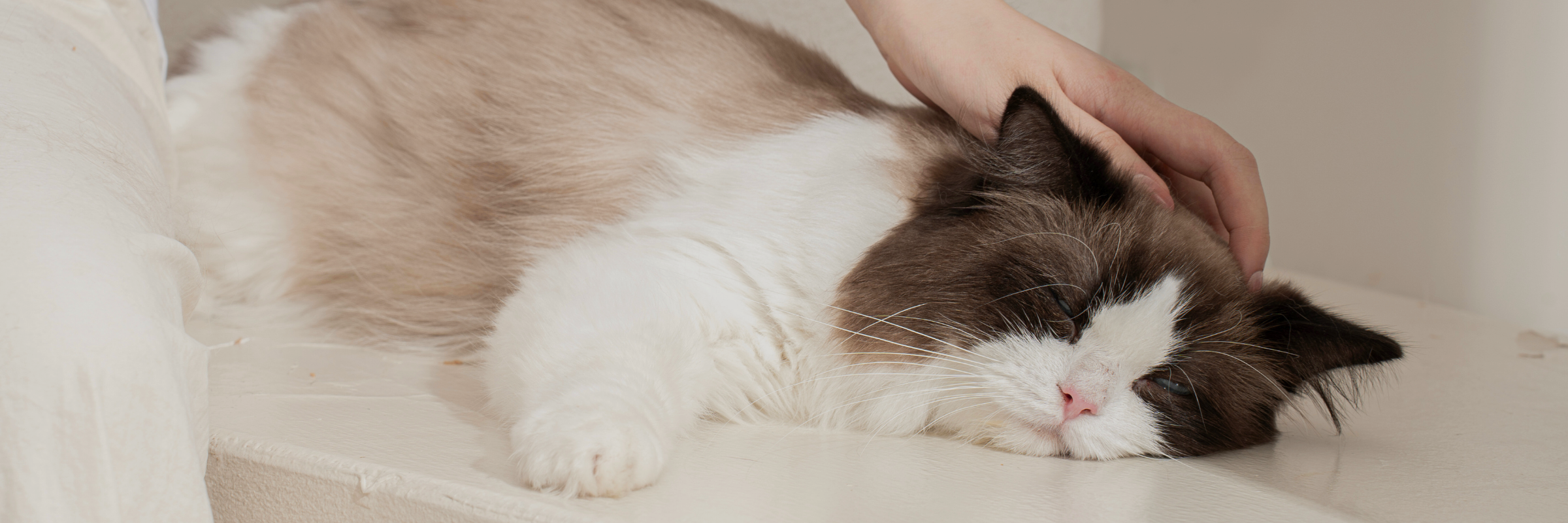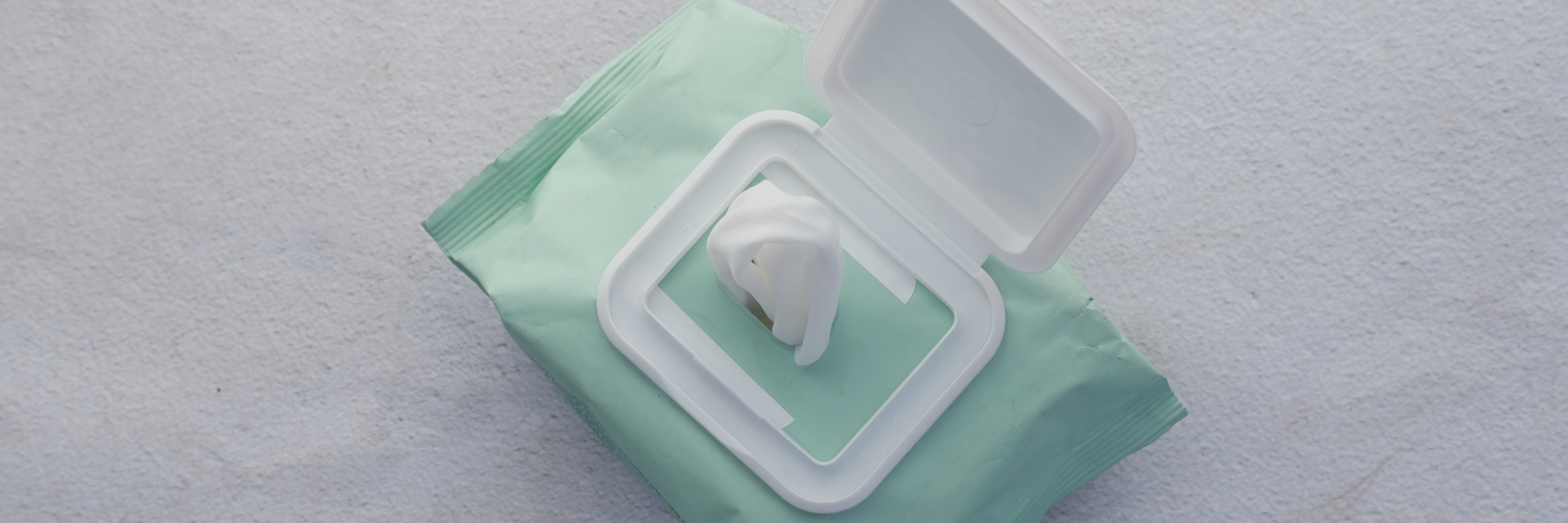
Decoding Pet Behavior Through Grooming: What Your Dog or Cat’s Coat Is Telling You
The Language of Grooming
Every brush stroke, soft towel press, or gentle touch tells a story — if we learn to listen.
For dogs and cats, grooming isn’t just about hygiene. It’s communication. Their body language, coat texture, and reactions reveal far more than we might realize about their comfort, trust, and wellbeing.
Whether you share your home with a pup who loves attention or a cat who only offers it on their own terms, understanding pet grooming behavior transforms ordinary care into connection.
At Muddi Pet, we believe that every cleanse, brush, and towel-dry is part of a conversation — one that strengthens the bond between you and your pet through calm, sensory care.

Dogs: Reading Their Reactions and Coat Cues
Dogs wear their emotions on their fur. When we groom them, we have the chance to read subtle signs that reveal how they feel both physically and emotionally.
1. Excessive Shedding or Dullness
A dog’s coat should feel soft and supple — not dry or brittle. When you notice heavy shedding outside of seasonal changes or a dull, flaky coat, it often signals an imbalance.
-
Over-bathing can strip essential oils, leaving the skin dehydrated.
-
Stress or diet deficiencies can also trigger excess shedding.
Switching to a gentle grooming ritual that preserves the skin’s barrier — like the Muddi Pet Rinse-Free Towel Cleanse Serum — can help reset the coat’s natural balance. Its oat, aloe, and calendula extracts calm irritation and restore softness without harsh surfactants or overwashing.
2. Body Language During Brushing
Watch closely during your next grooming session:
-
Flinching, lip licking, or pulling away can indicate discomfort or fear.
-
A relaxed tail, loose posture, or leaning in shows trust.
-
Yawning or blinking slowly often means your dog feels calm and safe.
If your dog avoids the tub or shivers at the sound of running water, it’s not stubbornness — it’s anxiety. The solution isn’t to push through it, but to create a new sensory experience.
Try the Muddi Ritual: a warm towel cleanse instead of a bath. The familiar temperature and gentle touch help dogs associate grooming with comfort, not chaos.
3. Fear of Baths or Grooming Tools
Many dogs develop grooming anxiety after stressful experiences — slippery tubs, loud dryers, strong fragrances. To rebuild trust:
-
Replace noise with calm background music.
-
Use a soft microfiber mitt instead of a stiff brush.
-
Avoid rushing; take breaks when your dog shows tension.
With consistency, your dog will begin to link grooming time to affection, not fear.

Cats: Decoding Subtle Grooming Signals
Cats are different communicators — delicate, instinctive, and deeply attuned to touch. Where dogs show their emotions openly, cats speak in whispers. Understanding cat grooming behavior means noticing the smallest details.
1. Overgrooming or Bald Spots
When cats lick or chew the same area repeatedly, it can indicate stress or irritation.
Possible causes include:
-
Environmental stress (new pet, travel, noise).
-
Allergies or harsh cleansing products.
-
Residual detergent or shampoo residue that irritates the skin.
Instead of bathing — which most cats find stressful — a rinse-free grooming method lets you clean without triggering anxiety. Muddi Pet’s formula uses lavender and chamomile oils to calm the senses while gently refreshing the coat.
2. Avoidance or Sensitivity
If your cat pulls away from brushing or stiffens at touch, it could signal:
-
Pain from mats or skin irritation.
-
Negative association with grooming tools.
-
Overstimulation — cats have sensitive nerve endings near the spine and tail.
Switch to slow, circular strokes using a soft towel or mitt, focusing on less sensitive zones like shoulders or chest. When you respect your cat’s comfort boundaries, they’ll begin to offer more trust.
3. Relaxed Signs to Look For
A cat who feels safe during grooming may:
-
Close their eyes while you wipe or brush.
-
Purr softly or knead their paws.
-
Gently nuzzle or stretch into your hand.
These behaviors show emotional safety — proof that grooming has become a bonding ritual, not a battle.
Coat Health as a Mirror of Wellbeing
A pet’s coat often mirrors their internal health. When you notice changes in texture, sheen, or scent, it’s your first clue that something deeper might need attention.
1. Dullness or Greasiness
-
Can suggest an imbalanced diet or buildup from product residue.
-
Frequent overbathing can disrupt the skin microbiome — stripping the oils that keep fur naturally lustrous.
Muddi’s botanical-based serum cleanses without over-stripping, helping maintain that natural equilibrium.
2. Dry, Flaky Skin
-
Common in pets bathed too often or with harsh detergents.
-
Look for oat extract, aloe, and calendula — ingredients known to hydrate and soothe irritation.
That’s why we formulated the Rinse-Free Towel Cleanse Serum to deliver a 98.65% naturally derived blend — no sulfates, parabens, or silicones, only skin-loving nourishment.
3. Texture or Odor Changes
A sudden shift in coat texture, excessive oil, or unusual odor can be an early sign of hormonal or metabolic change. Regular, gentle grooming helps you spot issues early — and keeps your pet comfortable in between vet visits.

Practical Tips for a Trust-Building Grooming Routine
-
Set the mood: Play soft music or light natural daylight.
-
Prepare the towel: Soak it in warm water mixed with your diluted Muddi Pet Rinse-Free Serum (1 capsule = 1500 ml).
-
Move slowly: Focus on short, rhythmic motions — like a massage, not scrubbing.
-
Check reactions: Adjust pressure if your pet stiffens or flinches.
-
Finish softly: End with brushing or a cuddle to reinforce safety.
This transforms grooming into a mindful act — one that’s as restorative for you as it is for them.
Understanding Behavior = Better Care
By learning to read your pet’s body language during grooming, you’re not just improving coat health — you’re strengthening communication. You’ll start to see patterns:
-
A wagging tail that softens when you slow your strokes.
-
A cat that blinks at you mid-wipe, signaling trust.
-
The moment your pet exhales and fully relaxes into your hands.
These are more than cute reactions — they’re affirmations that your pet feels safe, cared for, and connected.
Listen Through the Fur
In every Muddi Pet ritual, there’s a moment when the world goes quiet — just the warmth of a towel, the soft scent of botanicals, and the slow rhythm of breath between you and your pet.
That’s where care becomes communication.
So the next time you groom your dog or cat, look beyond the fur. Notice the small shifts, the language of comfort and trust unfolding right beneath your hands.
Because when we listen to our pets — truly listen — grooming stops being a chore and becomes a shared act of calm, connection, and love.


